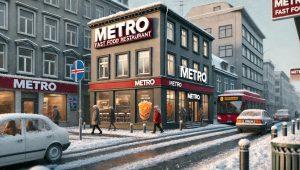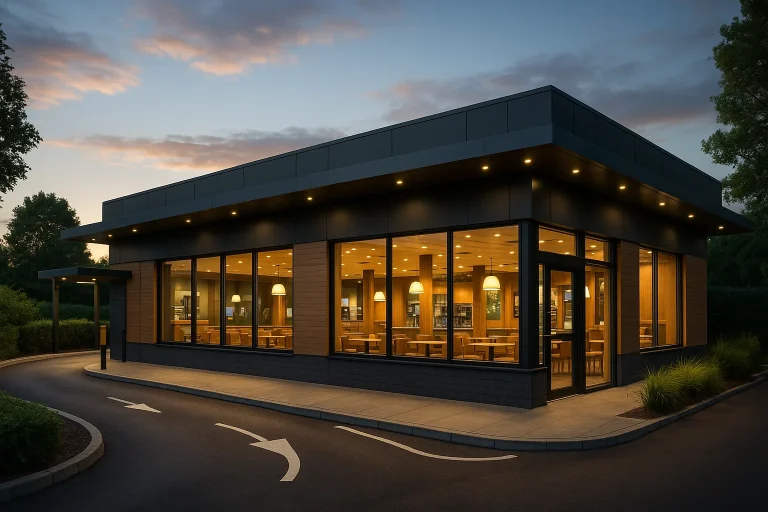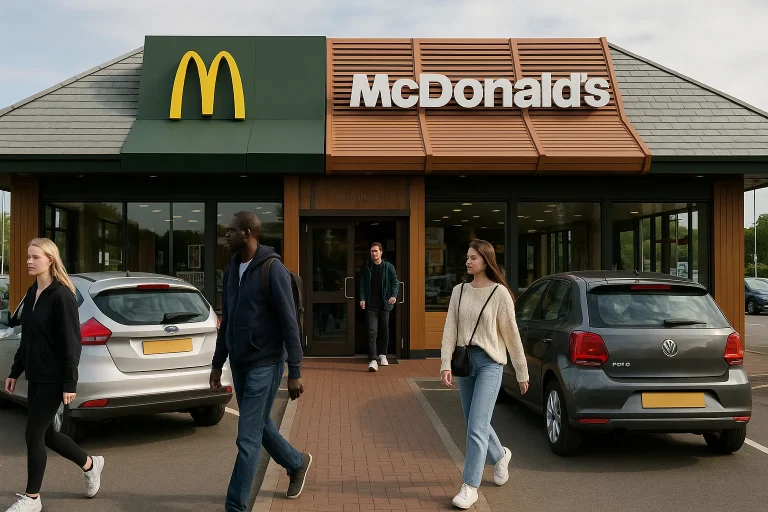Does Iceland have McDonald’s? It’s a question that surprises many, given McDonald’s reputation as one of the most recognizable global fast food brands.
Iceland, known for its pristine natural beauty, innovative energy solutions, and strong sense of cultural identity, stands out as a rare exception. While most countries welcome fast food chains as part of globalization, Iceland chose a different path.
This blog will uncover the reasons behind McDonald’s departure from Iceland, explore the alternatives available, and highlight how Iceland’s approach to food reflects its values and priorities.
Does Iceland Have McDonald’s?

No, Iceland does not have McDonald’s, and the story behind this absence is as unique as the country itself. McDonald’s opened its first outlet in Iceland in 1993 but shut down all its operations in 2009.
Unlike other countries where McDonald’s closures often stem from poor sales, Iceland’s situation was driven by a combination of economic and cultural factors.
The departure of McDonald’s sparked a shift in the country’s fast food landscape, making room for local players to step up and redefine what fast food means in Iceland. Today, Iceland offers an array of alternatives, some of which are deeply rooted in its culinary traditions.
The History of McDonald’s in Iceland

McDonald’s entered Iceland in the early 1990s, a time when the country was embracing globalization. The chain quickly became popular, with residents and tourists flocking to its Reykjavik location.
However, from the outset, McDonald’s faced logistical challenges. Iceland’s remote location and harsh climate made it impossible to grow many of the ingredients locally.
To maintain consistency with its global menu, McDonald’s imported most of its supplies from Germany and other European countries.
This reliance on imports made operations expensive, but the chain persisted for 16 years until the global financial crisis tipped the scales.
Why Did McDonald’s Leave Iceland?
The 2008 financial crisis was a pivotal moment in Iceland’s modern history. The collapse of the Icelandic krona caused import costs to soar, making it economically unviable for McDonald’s to continue its operations.
The franchise owner at the time, Jon Gardar Ogmundsson, had two options: raise prices significantly or switch to locally sourced ingredients. Neither option aligned with McDonald’s strict global standards, leading to the decision to close all locations.
This closure highlighted Iceland’s broader economic vulnerabilities but also sparked a conversation about the importance of self-reliance and sustainability in the food industry.
What Replaced McDonald’s in Iceland?

After McDonald’s exit, its franchise owner launched Metro, a fast-food chain that filled the void left behind. Metro operates in the same locations formerly occupied by McDonald’s but with a distinctly Icelandic approach.
Unlike McDonald’s, Metro sources a significant portion of its ingredients locally. This shift aligns with Iceland’s broader focus on sustainability and reducing dependence on imports.
The menu features familiar items like burgers, fries, and milkshakes but with a fresher, more localized twist.
Metro has become a popular choice for locals and tourists alike, proving that Iceland can thrive without relying on global fast food giants.
Fast Food Alternatives in Iceland
Even without McDonald’s, Iceland offers a variety of fast food options. Global chains like Subway, Domino’s Pizza, and KFC have established a presence in the country, catering to those seeking familiar tastes.
In addition to international brands, Iceland boasts a vibrant local fast food scene. Here are some noteworthy options:
- Bæjarins Beztu Pylsur: Famous for its Icelandic hot dogs, often considered a must-try by visitors.
- Hamborgarabúlla Tómasar (Tommi’s Burger Joint): A local burger chain celebrated for its quality and simplicity.
- Food trucks and street vendors: Offering everything from fresh seafood to lamb-based dishes, these provide a taste of Icelandic cuisine in a casual setting.
This mix of global and local options ensures that everyone can find something to satisfy their cravings.
Iceland’s Approach to Food Sustainability

Iceland’s emphasis on sustainability is one of the main reasons why global chains like McDonald’s struggle to thrive. The country takes pride in its clean energy production, sustainable fishing practices, and locally-sourced ingredients.
Food sustainability in Iceland extends to restaurants and fast food chains. By prioritizing local ingredients, businesses reduce their carbon footprint and support the domestic economy.
This approach aligns with the values of many Icelanders, who prefer quality and sustainability over convenience.
Is McDonald’s Ever Coming Back to Iceland?
While rumors about McDonald’s potential return occasionally surface, it seems unlikely in the near future. The challenges that led to McDonald’s departure high import costs, economic fluctuations, and Iceland’s preference for local alternatives persist today.
Moreover, Icelanders have adapted to a McDonald’s-free lifestyle, embracing Metro and other options. Unless McDonald’s significantly alters its business model to align with Iceland’s values, a return would be both challenging and improbable.
Lessons from Iceland’s Food Landscape
Iceland’s decision to embrace local alternatives over global brands offers valuable lessons for other countries. By prioritizing sustainability and self-reliance, Iceland has created a dining culture that reflects its unique identity.
This approach not only supports the environment but also fosters a stronger connection between consumers and their food sources.
Conclusion
So, does Iceland have McDonald’s? The answer is no, and its absence tells a story of resilience, adaptation, and a commitment to local values.
From the rise of Metro to the country’s vibrant fast food scene, Iceland has shown that it doesn’t need global fast food giants to thrive. Its approach to sustainability and dining serves as an inspiration for nations looking to balance globalization with cultural preservation.
Whether you’re visiting Iceland for its natural wonders or its culinary delights, one thing is certain: Iceland’s food scene offers a unique and unforgettable experience.
FAQ
Why is there no McDonald’s in Iceland anymore?
McDonald’s left Iceland in 2009 due to unsustainable import costs following the 2008 financial crisis, coupled with the country’s focus on local alternatives.
What fast food chains are currently available in Iceland?
Popular options include Subway, Domino’s Pizza, KFC, and local favorites like Metro and Tommi’s Burger Joint.
Did Iceland’s financial crisis cause McDonald’s to leave?
Yes, the financial crisis played a significant role, as the collapse of the Icelandic krona made it too expensive for McDonald’s to operate.
What is Metro, and how does it compare to McDonald’s?
Metro is an Icelandic fast food chain that replaced McDonald’s. It focuses on locally sourced ingredients and offers a menu similar to McDonald’s but with a local twist.
Are there any plans for McDonald’s to return to Iceland?
There are no concrete plans for McDonald’s return, as the economic and cultural factors that led to its closure remain unchanged.
How does Iceland’s food culture influence dining options?
Iceland’s emphasis on sustainability and locally sourced ingredients shapes its dining landscape, favoring quality over convenience.
What makes Iceland’s fast food industry unique?
Iceland’s fast food scene blends international influences with local flavors, offering a sustainable and culturally rich dining experience.




